21 Types of Pickles to Tickle Your Taste Buds
Author: Anne Cowart | Editor: Omar Alonso
Review & Research: Jen Worst & Chris Miller
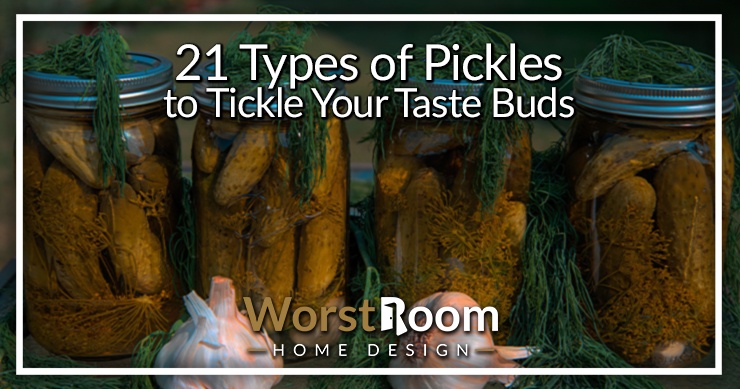
Different types of pickles are a favorite all over the world, with pickled cucumbers being the most popular kind in the United States, and for good reason.
Pickling is a method of preserving food with the help of fermenting agents like vinegar and salt. The art of making pickles originated in the Indus Valley as a way to preserve food out of their season.
Pickles are the perfect complement to add a dash of flavor to your burgers, sandwiches, and salads. Since they are low in calories they also make the perfect snack for your mid-day break.
21 Types of Pickles
If you are ever having a hard time choosing the perfect pickle to munch on, check out these 21 types of pickles! And if you're feeling up to the exciting challenge, you can make your own pickles.
Genuine Dill Pickles
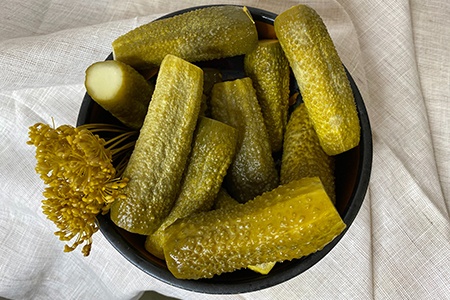
The genuine dill pickle is made by pickling whole cucumbers in flavored vinegar or brine. The base flavor of these pickles comes from the addition of dill. Dill in any form—fresh, dry or seeds—can be used in pickles.
Dill provides a distinct and mild anise-like flavor to these pickle types. This variety is known for its distinct sour taste. They pair great with sandwiches and salads, or you can even snack on them straight from the jar.
These pickles can be stored in jars at room temperature. Once opened, they are safe to consume at least for a year, if properly refrigerated and stored.
Kosher Dill Pickles
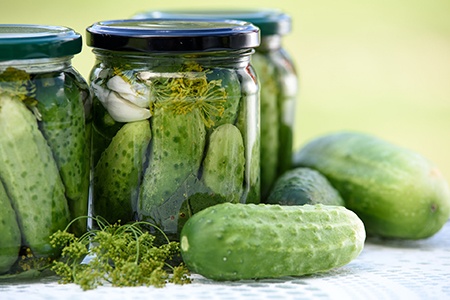
Kosher pickles are prepared in a style that follows Jewish dietary regulations. These kinds of pickles are a classics that are as popular as the genuine dill pickle.
Kosher pickles are fermented in a salt brine. They are more flavorsome than the classic dill pickles due to the addition of garlic to the pickling mix. The combination of salt, garlic, and dill is the best accompaniment to deli sandwiches.
Overnight Dill Pickles
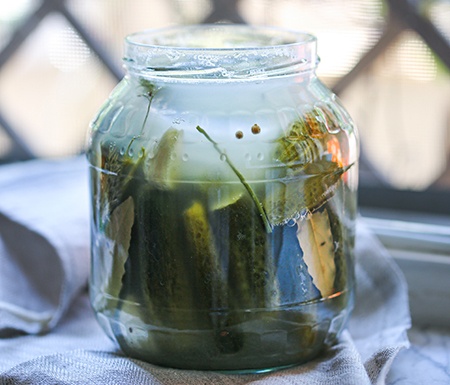
While pickles are usually allowed to ferment for about five to six weeks before consumption, overnight dill pickles are fermented only for one or two days. This short fermentation period drastically changes the flavor profile of the dill pickle.
The cucumbers in overnight dill pickles still taste like fresh and crispy cucumbers with a hint of dill. These bright green pickles are usually fermented in brine solutions which may include a small amount of vinegar.
These pickle varieties need to be refrigerated and consumed quickly as they have not been allowed to cure and ferment in the brine solution.
Polish Dill Pickle
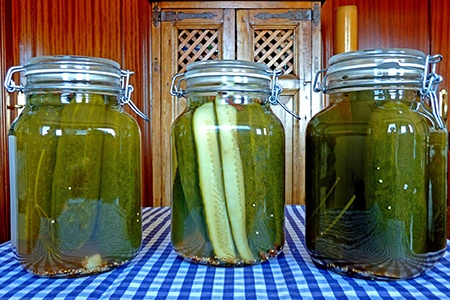
These pickle flavors originated in the northern parts of central and eastern Europe. They became popular in the United States after it was introduced by immigrants.
They are different from the genuine dill and kosher dill variants because they add a lot more spices and flavors to the mix. Polish pickles are known for their peppery flavor.
They also add more dill and sometimes even a dash of mustard to these preparations. These aren't vastly different kinds of pickles, so if you want to try something that's not too far out there, this is a good place to start.
German Dill Pickle
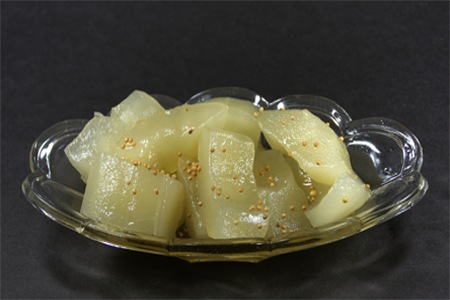
The German dill pickle is also called Senfgurken flavors of pickles. The highlight of this recipe is that they pickle peeled cucumbers.
The peeled cucumbers are fermented in a brine solution flavored with lots of dill and certain types of mustard. These pickles are also called mustard pickles because of the strong mustard base in the flavor profile. These types of pickles need to be refrigerated.
Hungarian Dill Pickle
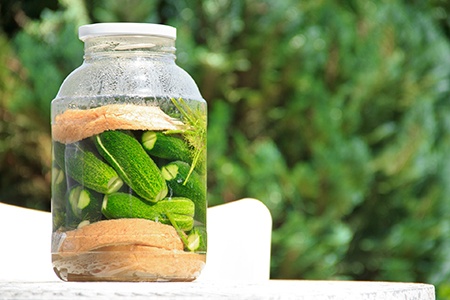
Hungarian dill pickles differ from the classic dill pickle because they do not use vinegar in the fermentation process.
The cucumbers are put in a glass jar along with dill, garlic, and kosher salt. A slice of bread is placed at the top and bottom of the jar. Water is poured in and the mixture is given a good shake and placed in the sun for a few days.
The sun’s heat and yeast from bread start the fermentation process which is why these types of pickles are usually made in the summer season.
Sour Pickles
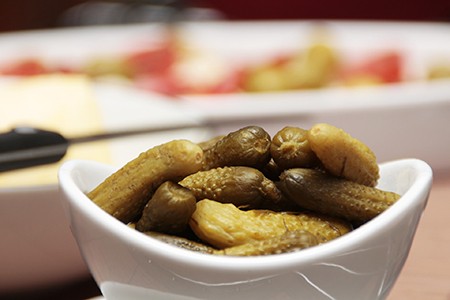
Sour pickles are fermented without the addition of vinegar. The pickle solution is made of salt, water, and spices. Of all the pickle names, this one is the most suiting.
If consumed within six weeks of pickling, they are called half-sour pickles and the veggies will still be fresh and crispy. However, the more you leave them to ferment in the brine solution, the sourer it will become.
Sweet Pickles
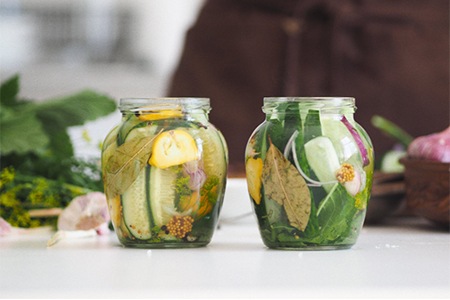
Sweet pickles combine the flavors of vinegar, sugar, types of onions, and some aromatic spices to create pickles with a hint of sweetness. These pickles usually have a sweet and sour flavor.
These pickles do have a higher calorie count than traditional pickles because of the added sugar, so they are not ideal for those trying to be aware of their weight.
Bread & Butter Pickles
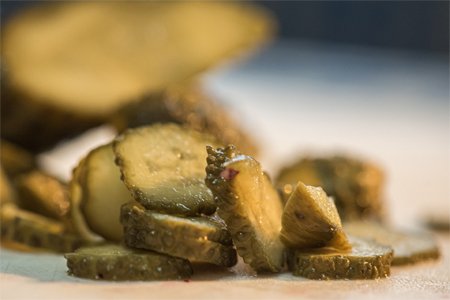
Even though they are named after them, bread and butter pickles have nothing to do with bread or butter. These pickles have a sweet base instead of the usual salty and sour flavor profile you associate with pickles.
They are thinly sliced cross-sections of cucumber fermented in a solution of vinegar and sugar. These kinds of pickles are tangy and get their flavor from celery seeds, mustard seeds, and coriander.
Candied Pickles
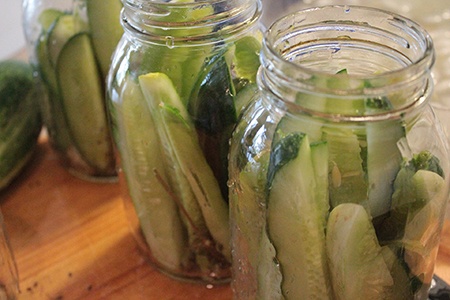
These are sweet pickles that are fermented in an extra-sweet solution. They are as sweet as candy and make for a quick and delicious snack. They do not keep well outside, so they need to be refrigerated.
Pickled Peppers
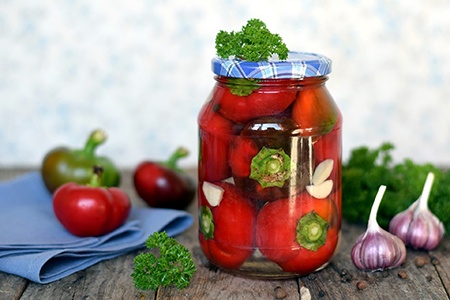
Pickled peppers are the perfect condiment to spice up your sandwiches and salads. These are pickled in the same way as cucumbers—either pickled whole or sliced up. The peppers are fermented in vinegar and brine solutions seasoned with spices.
There are so many varieties of pickled pepper you can try out depending on your spice tolerance. Pickled jalapenos are very hot and used in Mexican and southwestern cuisine.
Pickled banana peppers are long banana-shaped peppers that can come in a hot or sweet brine. Pickled cherry peppers are shaped like cherries and are also available in hot and sweet variants.
Pickled pepperoncini are mildly hot peppers that are used in Mediterranean cuisine.
Sauerkraut

Sauerkraut is a type of pickled cabbage that originated in Central and Eastern European countries. Lactic acid and salt are used to ferment finely chopped raw cabbage.
The distinctive sour flavor of sauerkraut is a result of the lactic acid fermenting the sugars in the cabbage leaves.
Red Beet Pickles
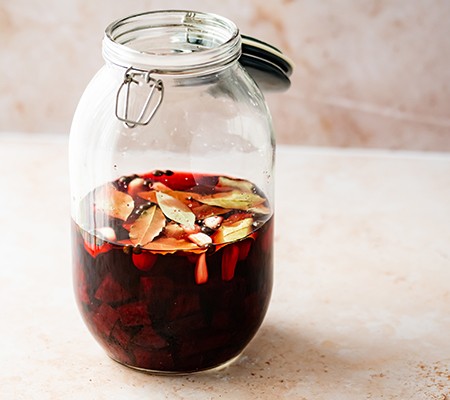
Red beet pickles are quite popular in the southern states of the USA. The red beets are pickled in a solution of vinegar, sugar, and salt and seasoned with spices like cloves. Since most types of beets are naturally sweet, these will be a sort of sweet and sour pickle.
Apart from adding some color to your diet, pickled beets also provide minerals like potassium, calcium, and iron.
Lemon Pickles
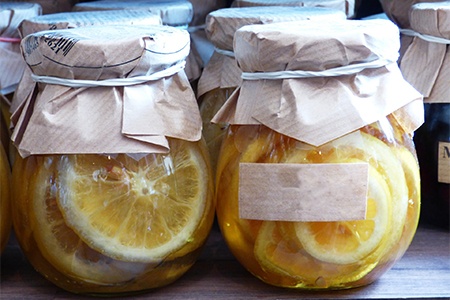
Lemon pickles are a specialty in the West Coast regions. They are available in both sour and sweet variants. The sweet variant tastes much like a concentrated lemonade.
Lime Pickles
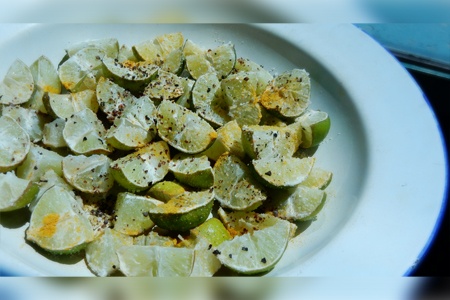
Lime pickles are a twist because it's not cucumbers that are being pickled but types of limes. This taste is most appreciated in India, often served with rice or flatbread.
You'll whip up a mason jar of salt, fennel seeds, turmeric powder, mustard seeds, chili powder, and your limes, and about two weeks of wait time. Then you'll have a great way to improve dishes that come out rather plain.
Cinnamon Pickles
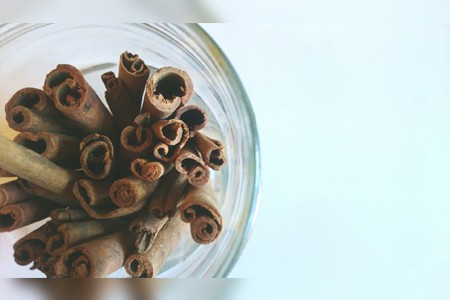
Cinnamon pickles are an interesting variant that typically makes an appearance around Christmas time. They'll often come out with a bright or dark red tint to them, making them even visually unique just as much as they taste unique.
Making these isn't as simple as pouring cinnamon powder into the jar. You have to whip up a syrup from various ingredients like sugar so that the pickles come out tasty and not just weird and eccentric. These are interesting pickle flavors that you should definitely try if you get the chance.
Alcohol Soaked Pickles
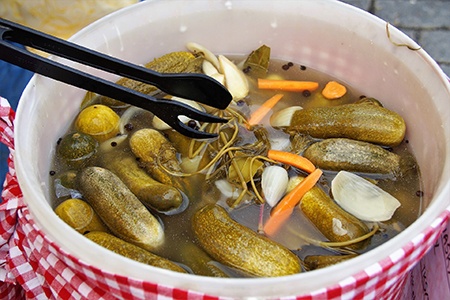
Brine and booze go well together, which is why alcohol-soaked pickles have gained quite some popularity. Vinegar is usually used as a preservative and fermenting agent when pickling vegetables. Alcohol has also been used as a preservative agent.
Combining the flavor profile of spirits and other adult beverages along with your pickle brine, infuse the vegetables with more flavor and create a unique pickle experience.
Kool-Aid Pickles
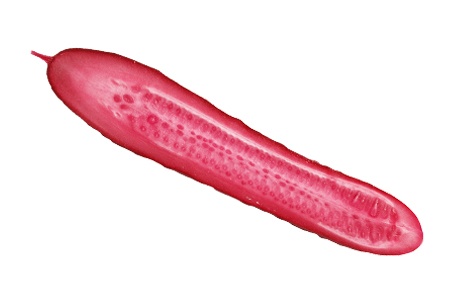
Kool-Aid pickles are also known as koolickles. Although it seems weird to pickle dills in Kool-Aid, they have become quite popular, especially among kids.
They are similar to sweet and sour candied cucumbers as they combine the extreme sweetness of Kool-Aid with the sourness of the vinegar solution.
Kool-Aid pickles also make for a visual treat, as the cucumbers soak up the vibrant colors of the different Kool-Aid flavors.
Gherkin Pickles
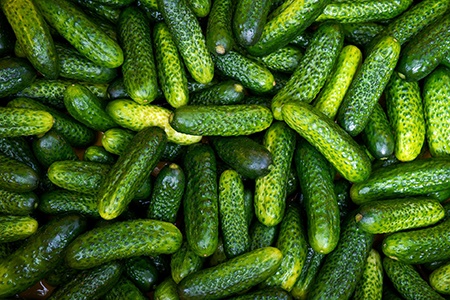
Gherkins are small varieties of cucumber that are pickled when they are as small as two or three inches long. They are more flavorful and have a bumpier skin than your regular cucumbers.
These miniature cucumbers are very versatile and can be fermented in a variety of styles including sweet, sour and even combinations of the two.
Cornichon Pickles
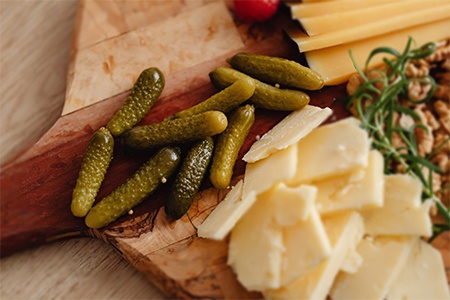
Cornichon is the French term for the petite and bumpy skinned gherkin. The French variant of the gherkin pickle is fermented in vinegar and flavored with tarragon. They are crispy and fresh pickles that perfectly complement pâtés and cold cuts.
Refrigerator Pickles
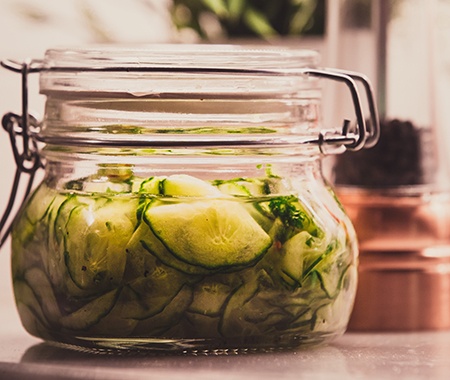
Refrigerator pickles are similar to overnight pickle types. They do not need fancy canning equipment. They don’t need to be fermented for weeks either. They are ready for consumption faster.
You can just cut up fresh veggies, put them in a solution of vinegar and spices, and pop them in the fridge. Refrigerator pickles taste crispy and fresh and need to be consumed within a few weeks. This is the best way to keep sliced cucumbers fresh.
Types of Pickles for Every Taste
Pickles are a favorite all over the world, and each different cuisine has perfected its version of the pickle. They are a healthy and fuss-free snack, that can be combined with a lot of different dishes.
Pickles have been around for almost 4,000 years. They are a delicious and healthy snack that has withstood the test of time. You won't regret taking a journey through the different types of pickles.




